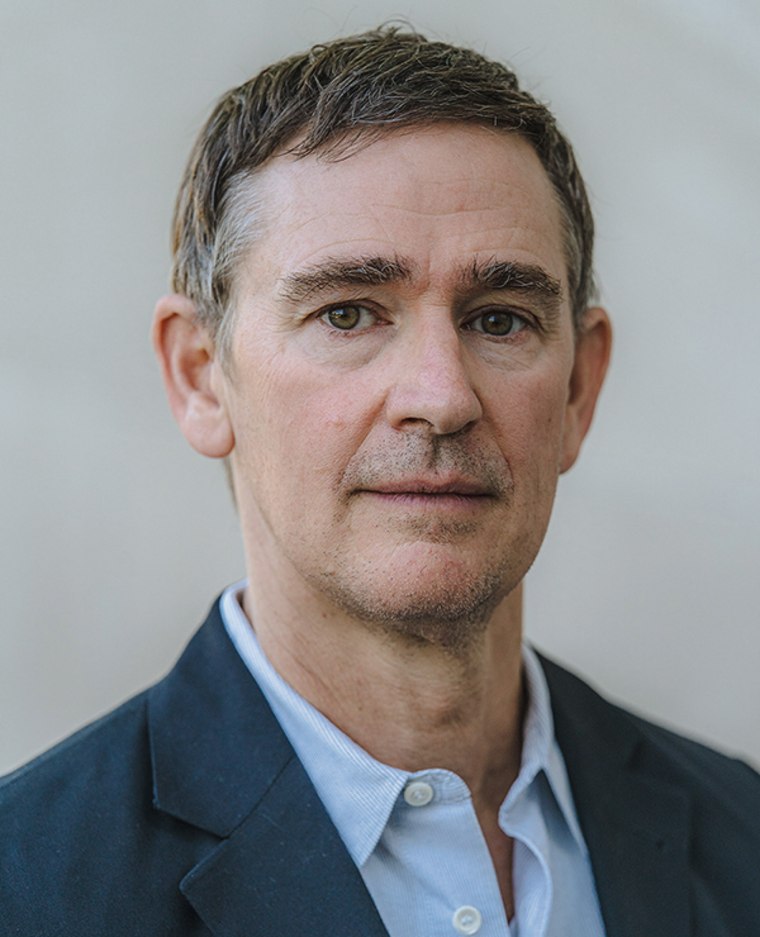September is National Suicide Prevention Month. This story discusses suicide. If you or someone you know is in crisis, call or text 988 to reach the Suicide and Crisis Lifeline. You can also text HOME to 741741 or visit SpeakingOfSuicide.com/resources for additional resources.
Clancy Martin calls himself a chronically suicidal person. He’s tried to die by suicide throughout his life, with the last attempt coming in 2014, he says.
That incident opens his book — a memoir with the startling title “How Not to Kill Yourself: A Portrait of the Suicidal Mind.”
Martin, a husband and father of five, says he’s glad to be alive today.
“I’m incredibly grateful I’m here. I’m incredibly relieved that all the attempts failed,” Martin, 56, who is a professor of philosophy at the University of Missouri-Kansas City, tells TODAY.com.
“My suicidal ideation has dropped off like it’s never been before in my life. When I do have thoughts of suicide, rather than thinking, ‘Doesn’t that sound like a relief?’ — as I thought all my life — I think, ‘No, that’s a bad idea for you, Clancy.’ I’m able to look at the thought and be with the thought, but have no temptation to act on it.”

Martin hopes his book helps suicide-attempt survivors who are still struggling and people who are thinking about making an attempt. Those affected by a loved one’s suicide may realize there’s probably nothing they could have done differently to prevent it, he says.
A survivor's advice about getting through moments of crisis can offer valuable insight, says Ashley Smith, Ph.D., a licensed clinical psychologist in Kansas City, Missouri, and a member of the Anxiety and Depression Association of America.
"A lot of times, people who are struggling with suicide feel very alone, and having that kind of first-hand account of, ‘I’ve been where you are and I got through it, here’s how and why,’ can be really powerful," Smith tells TODAY.com.
Suicidal impulses should be talked about more and society should destigmatize suicide, Martin adds.
“The more we talk about this, as long as we’re talking about it in an informed and intelligent way, the more lives we’re going to save,” he says.
Smith agrees, noting that asking someone if they’re suicidal won't make them suicidal, but opens the door for conversation, she says.
Martin believes almost all suicides are preventable and Smith shares that view, though she warns the window for prevention can be much smaller in some cases. Some people, especially teens and young adults, may not be depressed or show warning signs, then experience a triggering event that exceeds their ability to cope.
"It can happen within the span of minutes or hours," Smith says. "In that case, it’s preventable if we’re equipping people with basic psychological skills to understand a lot of what we think is not rational, accurate or helpful. It’s just thoughts."
Here is Martin's advice for people in crisis and their loved ones, and a psychologist's take on his tips:
Go for a walk outside
Martin: If someone comes to you in crisis, the No. 1 piece of advice I can I can give is to keep that person talking and get them walking. Get them out of their present environment — that will lessen the pain and ease the pressure.
If you, yourself, are in a moment of crisis, reach out to someone, even if it’s just sending a friend a text saying, “I’m having a rough day.” Get out of the physical space that you’re in. Just change rooms to start and then step outside. Take a breath of fresh air. Walk around a little bit.
You may notice that with simple sensory experiences — feeling the breeze on your skin, getting a little sunshine or seeing the night sky — you will get a faint memory that there is something quite magical about being alive.
That can help you to think, “As terrible as the pain I’m in is right now, maybe I can just go a few more hours or even one more day without making an attempt.” Then usually the crisis moment will pass.
Smith: Talking is a great strategy, and who doesn’t feel better after a long hard walk? When people are distressed, they go very inward. They’re wrapped up in their own pain. Connecting to something bigger can help, and being outside does that. There’s a world bigger than you — there is more hope and wonder. That could be really lifesaving.
Remove the blinders
Martin: Suicidal people tend to speak increasingly about their perception of their options narrowing until they feel like they have only one option, which is making an attempt.
You always have a lot more options than you realize. But with suicidal thinking, you get these blinders on. How do you remove them? If you’ve been in this place before, try to remember this is just an episode, not a permanent thing — “I’ve gotten through it and then things have improved.”
If this is the first time you find yourself in a place like this, stop focusing on “How do I escape this pain?” and just let yourself experience it. Cry your eyes out. You will get less panicky and claustrophobic. Suddenly you will realize, “I don’t have to act on the basis of this pain. I can try to be a little more patient with myself.”
Another way of removing the blinders is just asking yourself: Is there anything at all that might make me feel a little bit better? For me, it’s going for a walk.
Smith: I agree completely with the idea of removing the blinders — broaden your thinking to see you have a lot more options. In general, we need to feel the pain, but sometimes people start to wallow where they’re really ruminating on it. I don’t think that’s helpful because it’s going to intensify thoughts that suicide is the only option. So feel it, yes, and move through it. Don’t wallow.

Get rid of the gun
Martin: This is crucial. If you or someone you love has struggled psychologically in any serious way, just do yourself a favor. Get rid of that gun.
I don’t care how committed you are to your hunting or your recreational gun. You have to get it out of the house because that gun, when you get to a weaker point, is going to become something very different than what you use for target practice.
It’s the single most important thing that people could do. Absolutely do not keep a gun in the house.
Smith: If you’ve got easy access to lethal means, your risk goes up tremendously. In a moment when the impulses are really high, it’s too easy to grab it. I’m a big believer in don’t make it easy.
Boost your psychological nutrition
Martin: Exercise, particularly vigorous exercise, improves mental health. When I feel the onset of depression, I step up my exercise routine and I get very scrupulous about my diet.
If it’s still going on, I’ll call my psychiatrist and say, "I think I better get on an antidepressant."
You have to notice what works for you and what doesn’t. Running always makes me feel better, but bicycling doesn’t.
Does going on to Instagram tend to uplift you or does it drag you down? I had to get off social media entirely because it consistently made me feel worse.
Get at least eight hours of sleep. Get a nice dose of sunshine. Give yourself a treat food — for me, it’s ice cream. If I’m getting into a rough spot, I treat myself to an ice cream cone. That actually seriously helps.
Smith: These are really good basic mental health-supportive lifestyle habits. I would add a mindfulness practice to the list.
Try 988, the Suicide and Crisis Lifeline
Martin: It’s a very good thing. I found that texting is even more effective than calling.
Reach out to a friend
Martin: The project director for 988 told me the people who can most help a person struggling with making an attempt is just any ordinary human being who that person can trust.
How do you talk to a suicidal person? Don’t try to fix their problems. Don’t tell them it’s a bad idea, at least not right off the bat.
Ask them questions about how they’re feeling — “Tell me what’s going on.” Get them talking. Let them know they can say whatever they want to say to you. What’s driving them is panic. If you can keep them talking, they will eventually stop panicking. It will relieve the pressure and get them past the moment of crisis.
If you listen with an open, loving heart and in a non-judgmental way, chances are you will save that person’s life.
Smith: This advice is spot on. Be a non-judgmental safe person. You can say, "Tell me about how you’re feeling. That sounds really hard. I’m here for you. Let’s talk it through. Let’s think about all of the things you have going for you." The reasons-to-live list can sometimes be a really helpful conversation.
These interviews were edited and condensed for clarity.
